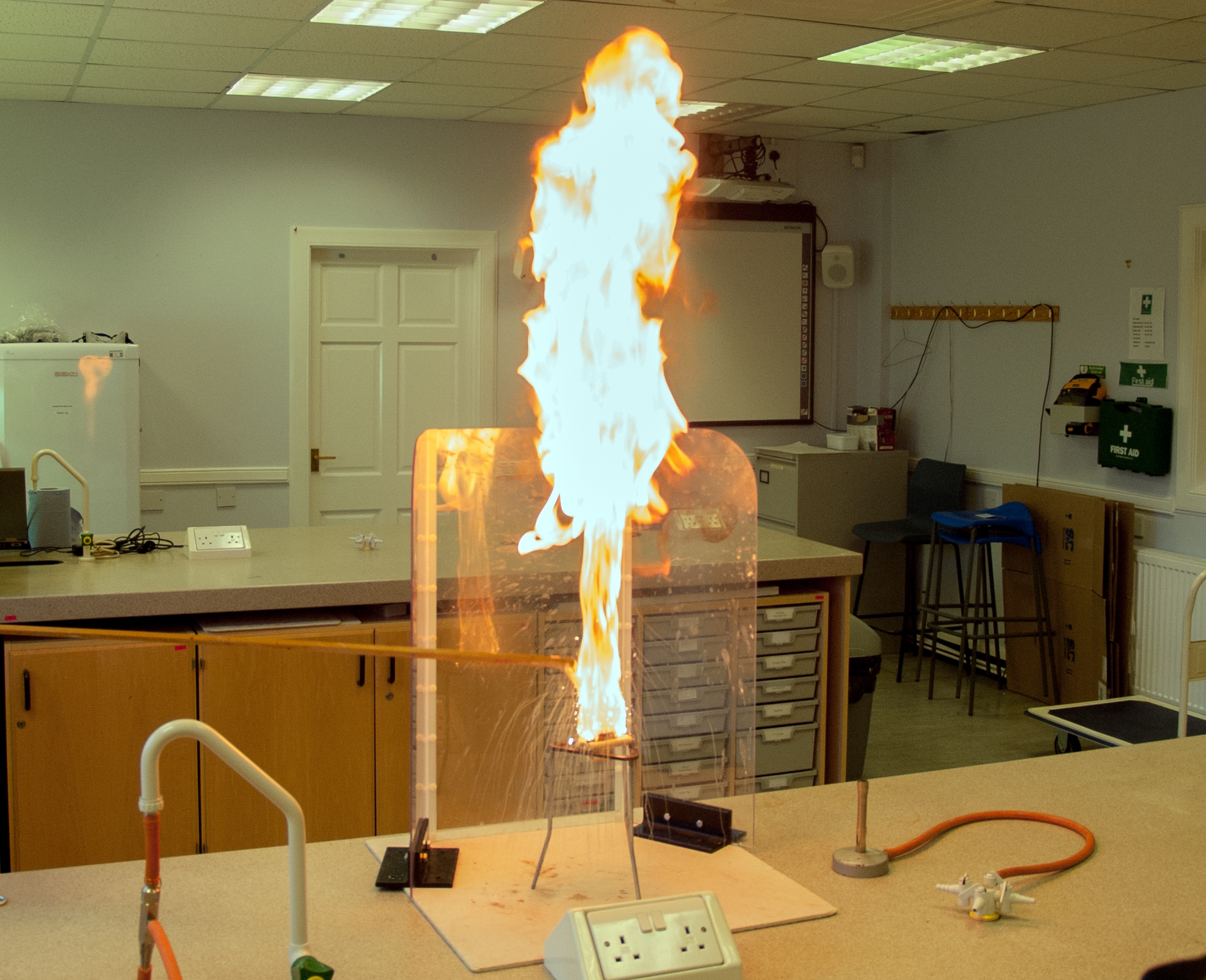Here too, prevention is key. Keep flammables away from sources of ignition. Keep contaiers sealed so flammable vapour cannot escape. Use the smallest amounts that are suitable and handle with care. And watch out for hot items and surfaces such as hotplates.
If you do this, most fires with be small, brief and insignificant but not all.

The most common burns are going to be small ones when someone touches something hot, like a tripod or glass rod. Cool under gently running water until first aid arrives. The hand will get very cold and be painful so the sensible thing is to allow victim to take hand out and put back into the water to minimise this.
Hair catching fire is not likely unless it has not been tied back properly. If it does catch fire smother the burning hair with cloth or even pat it out with your hands. A fire blanket is ideal but speed is of the essence. Use anything to hand. Towel, lab coat, jacket etc.
If loose clothing catches fire, smother by laying the casualty on the ground, flames on top. This is particularly important as both the heat and potentially toxic fumes are carried upwards. If the victim remains standing then these will both be carried towards the face where they can be inhaled and cause serious damage to the lungs. So getting the victim on floor quickly is important.
Just as with burning hair, smother the flames with a thick cloth or garment on top if necessary. A fire blanket is ideal but only use if very close by.
If the victim is able then rolling can help to extinguish the flames but is not essential. If it is done, then the rolling needs to be fast.
